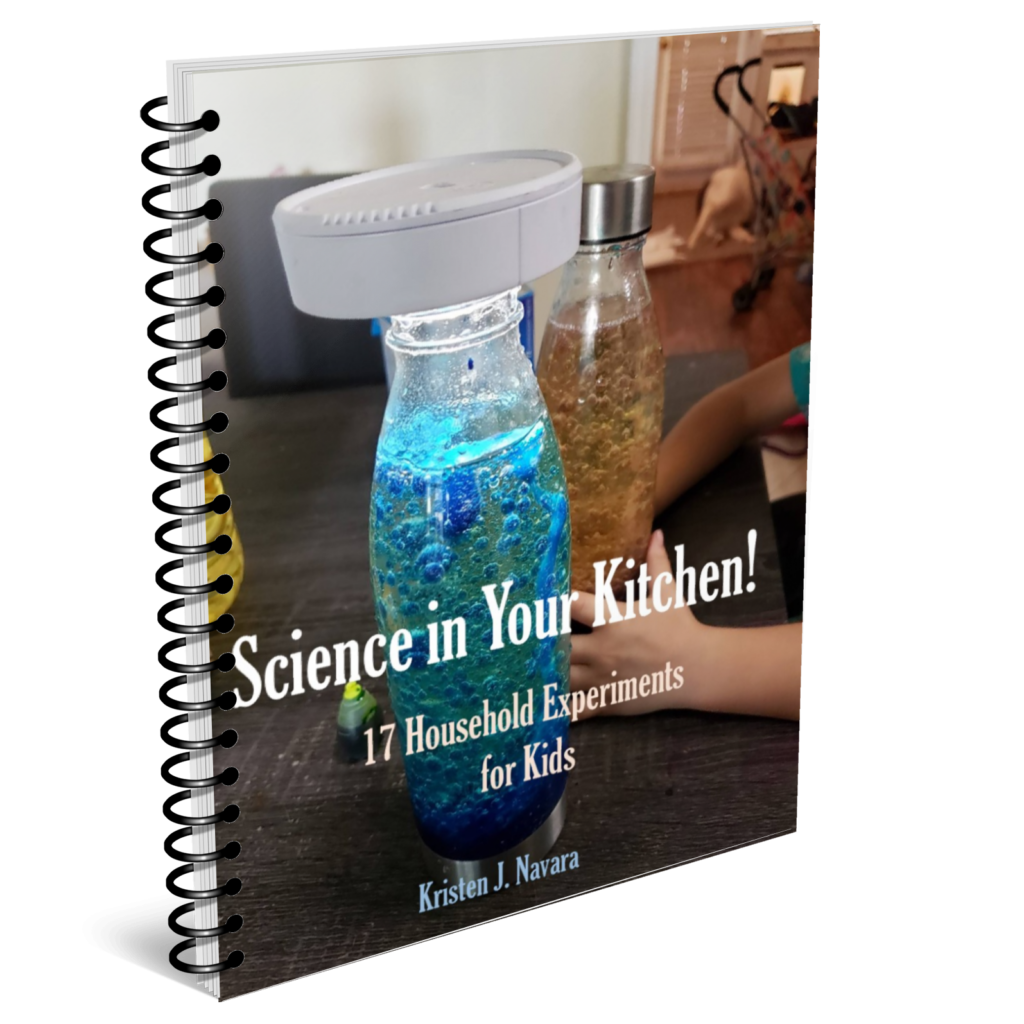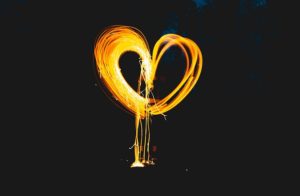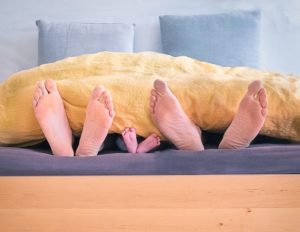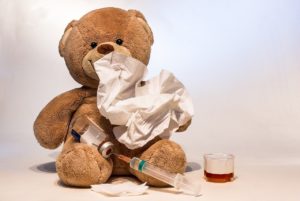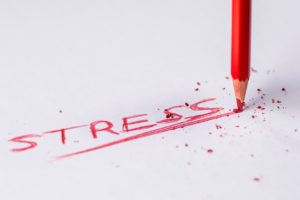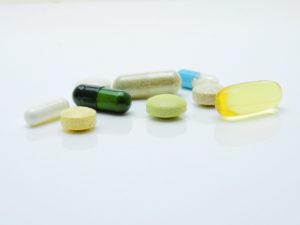A lava lamp is beautiful and relaxing. There’s just something about those globs of color floating up and down. Now you can make one in your own kitchen using ingredients you probably already have!
Here’s what you’ll need:
- A bottle or jar (an
empty 1L soda bottle would work well) - Vegetable oil
- Water
- Food coloring
- Alka Seltzer tablets
- A light (optional)
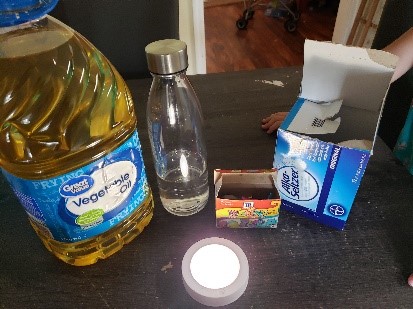
Step 1: First, fill the bottle about ¼ of the way with water. Here I used a clear bottle that I found at Walmart for 97 cents, but an empty clear soda bottle would work just as well. A lava lamp needs to be pretty tall to work, so go with a half or full liter, clear bottle.
Step 2: Next, add 2-3 drops of food color to the water. I recommend using just one color for the prettiest, most realistic lava lamp effect.
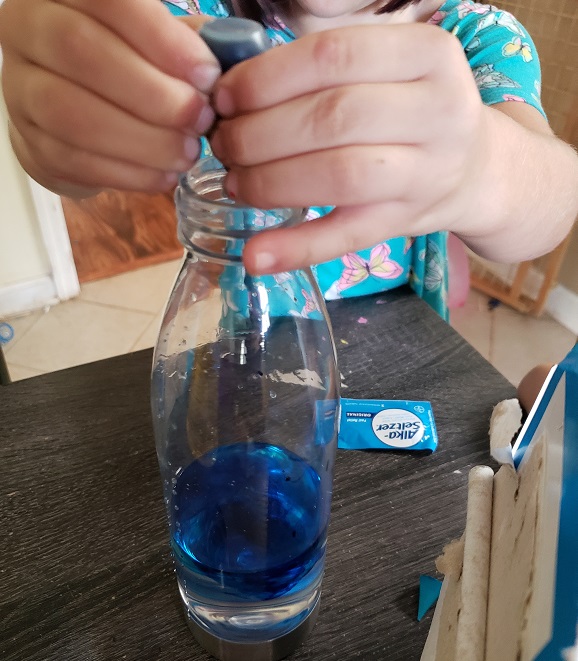
Step 3: Fill the rest of the bottle with vegetable oil, leaving a little space at the top.
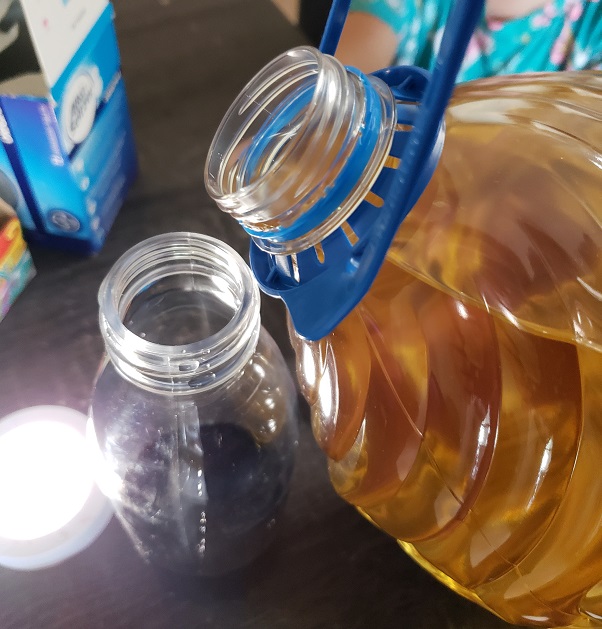
Step 4: Place a light on top. This is optional because it looks really cool even without the light. The light just adds a little something extra.
Step 5: Finally, drop an Alka Seltzer tablet into the bottle and let it bubble! Voila! You have a lava lamp! We’ve tried using more than one and it doesn’t really add anything extra, so I recommend using just one.
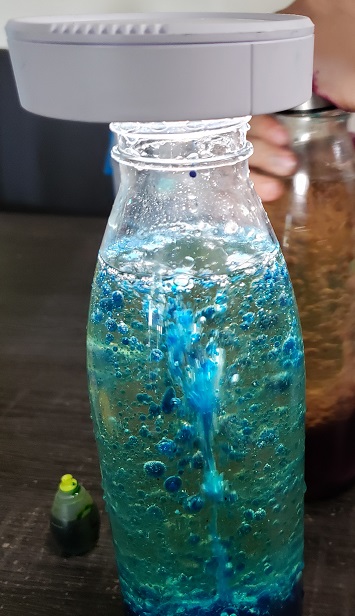
Here’s why it works:
Oil is hydrophobic, which means “water-fearing”. As a result, it doesn’t mix well with water.
Liquids are made up of molecules, and the chemical properties of those molecules determine what types of other liquids you liquid likes to hang out with and which ones it doesn’t.
Some molecules have electric charges that are unbalanced, and we call these molecules polar. Polar molecules like to hang out with other polar molecules, while nonpolar molecules also stay to themselves. Water is polar and oil is nonpolar. For that reason, when you pour the oil and water together, the layers will immediately separate.
Because
oil is less dense than water, it floats on top.
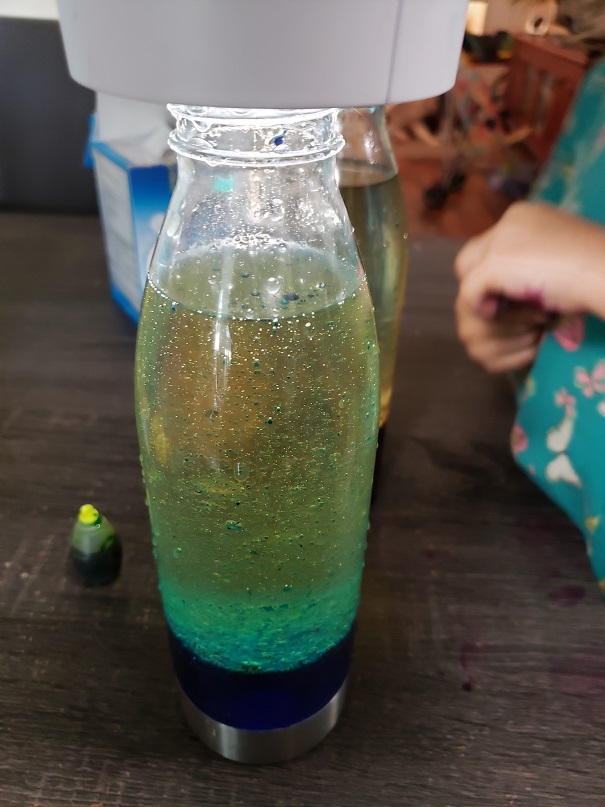
When you added the Alka Seltzer tablet, it began to dissolve, creating gas bubbles. As the gas bubbles rose to the top of the bottle, they carried some of the water with them.
Because the water and the oil don’t like one another, the bubbles of water don’t ever mix in with the oil. They simply stay in little beadlets.
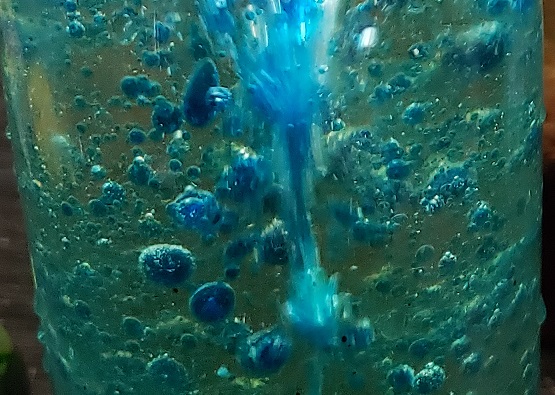
Once the gas escapes the top of the bottle, the color water droplets are left behind, and because they are more dense than the oil, they drop back to the bottom.
Want more home science experiments?
Download my free printable ebook of household science experiments for kids!

